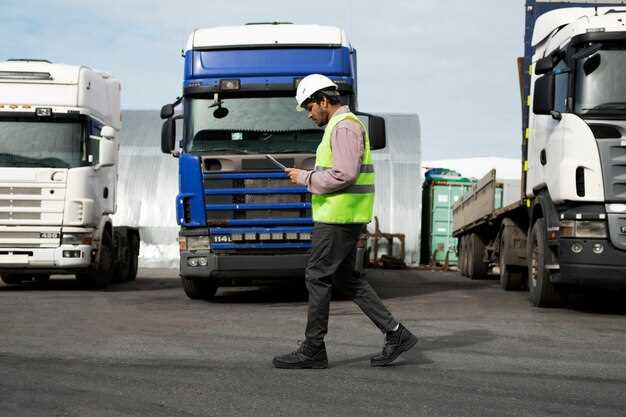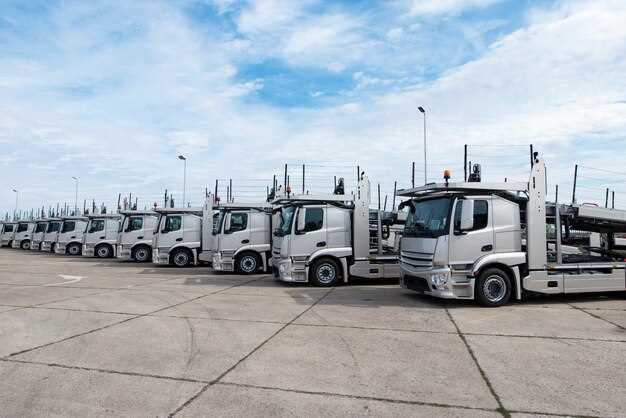
The evolution of truck commercials reflects broader changes in society, consumer preferences, and technological advancements. Over the decades, advertisements for these heavy-duty vehicles have transitioned from simple demonstrations of power and utility to complex narratives that resonate emotionally with viewers. The storytelling approaches utilized in these commercials now play a pivotal role in shaping brand loyalty and consumer perceptions.
In the early days, truck commercials primarily focused on showcasing the reliability and strength of the vehicles. Advertisers aimed to appeal to practical concerns, emphasizing features such as towing capacity and durability. As the industry progressed, it became clear that consumers sought more than just functional benefits; they craved a connection. This shift marked the beginning of a new era where lifestyle branding became a dominant trend, leading manufacturers to depict trucks as essential tools for adventure, family life, and personal freedom.
Today’s truck commercials often blend impressive visuals with emotional storytelling, showcasing not only the product’s capabilities but also the experiences it can facilitate. The integration of cutting-edge technology and environmental considerations has further transformed the messaging, appealing to a more conscious consumer base. By exploring the diverse narratives utilized over the years, we can gain insights into the changing landscape of marketing and the profound impact of culture and innovation on consumer behavior.
How Advertising Strategies for Trucks Have Shifted from the 1950s to Today

Advertising strategies for trucks have undergone significant transformations from the 1950s to the present day, reflecting changes in consumer behavior, technology, and market demands. This evolution can be categorized into distinct phases, each marked by unique themes and methods.
1950s – 1960s: The Rise of Reliability and Durability

During these decades, truck commercials focused on promoting reliability and durability. Advertisers emphasized:
- Heavy-duty construction
- Long-lasting performance
- Testimonials from satisfied customers
The messages catered to commercial users who relied on trucks for business operations, showcasing how trucks could withstand the rigors of work.
1970s – 1980s: Emphasis on Power and Performance
The 1970s and 1980s saw a shift towards showcasing power and performance. The key elements included:
- High horsepower ratings
- Innovative engineering features
- Comparison with competitors
Advertisements began to appeal to a growing recreational market, highlighting trucks capable of towing and off-road capabilities.
1990s: Introduction of Lifestyle Branding
In the 1990s, the focus shifted to lifestyle branding. Advertisements began to explore emotional connections and the truck as a lifestyle choice. Advertisers portrayed:
- Adventure and freedom associated with truck ownership
- Family-oriented experiences, like camping and road trips
- Visual storytelling that created aspirational imagery
2000s: Technological Integration and Safety Features
As technology advanced, the 2000s introduced features that highlighted safety and technological integrations. Key strategies included:
- Showcasing advanced safety technology, such as anti-lock braking systems
- Focusing on fuel efficiency and eco-friendliness
- Utilizing digital media to reach a broader audience through online platforms
2010s – Present: Diversity and Personalization
In recent years, advertisements have shifted towards diversity and personalization. Key elements of modern advertising include:
- Inclusive representation of diverse consumers
- Customization options catering to individual preferences
- Utilizing social media and influencer marketing to engage younger audiences
Moreover, modern commercials often focus on storytelling that resonates with specific audiences, such as millennials and Gen Z, highlighting sustainability and community-driven values.
This evolution in advertising strategies illustrates how the truck industry has adapted to changing consumer desires, technological advancements, and societal trends, ultimately shaping how trucks are marketed today.
Key Elements That Have Redefined Truck Brand Narratives in Commercials
Over the years, truck commercials have evolved significantly, incorporating various key elements that have redefined brand narratives. One of the most notable elements is the focus on authenticity and real-world utility. Advertisements now often feature real truck owners and their stories, highlighting how trucks fit into their daily lives and enhance their productivity. This shift towards reality over staged scenarios fosters a deeper emotional connection with potential buyers.
Another crucial component is the emphasis on advanced technology. Modern commercials showcase features like towing capacity, safety enhancements, and fuel efficiency, reflecting a growing consumer interest in performance and sustainability. Brands are increasingly leveraging high-tech visuals and demonstrations to communicate these advancements effectively, reinforcing their commitment to innovation.
The portrayal of ruggedness and adventure is also a defining aspect. Many truck commercials depict outdoor environments, showcasing the vehicle’s capability in extreme conditions. This imagery appeals to the adventurous spirit and positions the truck as not just a mode of transportation but a means to explore and conquer challenges.
Cultural resonance is a critical factor that brands are leveraging in their narratives. Many commercials now incorporate themes relevant to their target demographics, such as family, community, and tradition. By reflecting shared values and experiences, brands create relatable narratives that foster loyalty and trust.
Lastly, a growing emphasis on sustainability and environmental responsibility is redefining brand narratives. Truck manufacturers are increasingly showcasing eco-friendly technologies, such as electric and hybrid models, appealing to a more environmentally conscious consumer base. This approach not only modernizes the brand image but also aligns it with global sustainability trends.
The Role of Technology in Shaping Modern Truck Advertising Campaigns
Technology has significantly transformed the landscape of truck advertising, enabling brands to engage their audiences more effectively than ever before. The advent of digital platforms has shifted the focus from traditional media outlets to online channels, allowing for targeted advertising that reaches specific demographics.
Data analytics has become a cornerstone in creating successful advertising campaigns. Companies can now gather insights on consumer behavior, preferences, and trends, allowing them to tailor their messaging for maximum impact. This data-driven approach ensures that advertisements resonate with potential customers, ultimately increasing conversion rates.
Social media platforms have emerged as powerful tools for truck advertising, offering brands the opportunity to connect with audiences in real-time. Engaging content such as videos, live streams, and interactive posts enhances viewer interaction and fosters a sense of community around the brand. Influencer partnerships further amplify reach, as trusted voices in the industry can sway consumer opinions and drive interest in new truck models.
Virtual and augmented reality technologies have also made their mark on truck advertising. By allowing potential buyers to virtually explore truck features and capabilities, brands create immersive experiences that captivate audiences. These technologies enhance the customer journey, making it easier for consumers to visualize their needs being met.
Moreover, advancements in video production techniques, such as drone footage and high-definition cinematography, have elevated the visual quality of truck advertisements. Compelling storytelling combined with stunning visuals captures viewers’ attention and highlights the ruggedness and reliability of modern trucks.
Mobile technology plays a crucial role as well, with mobile-optimized advertisements ensuring that consumers can access content on the go. Smartphone apps and responsive websites provide potential buyers with easy access to information, enhancing the overall consumer experience.
In conclusion, technology has profoundly influenced modern truck advertising campaigns, providing tools and platforms that improve targeting, engagement, and customer experience. As the industry evolves, brands that leverage these technological advancements will likely lead the market, setting new standards for innovation in advertising.




